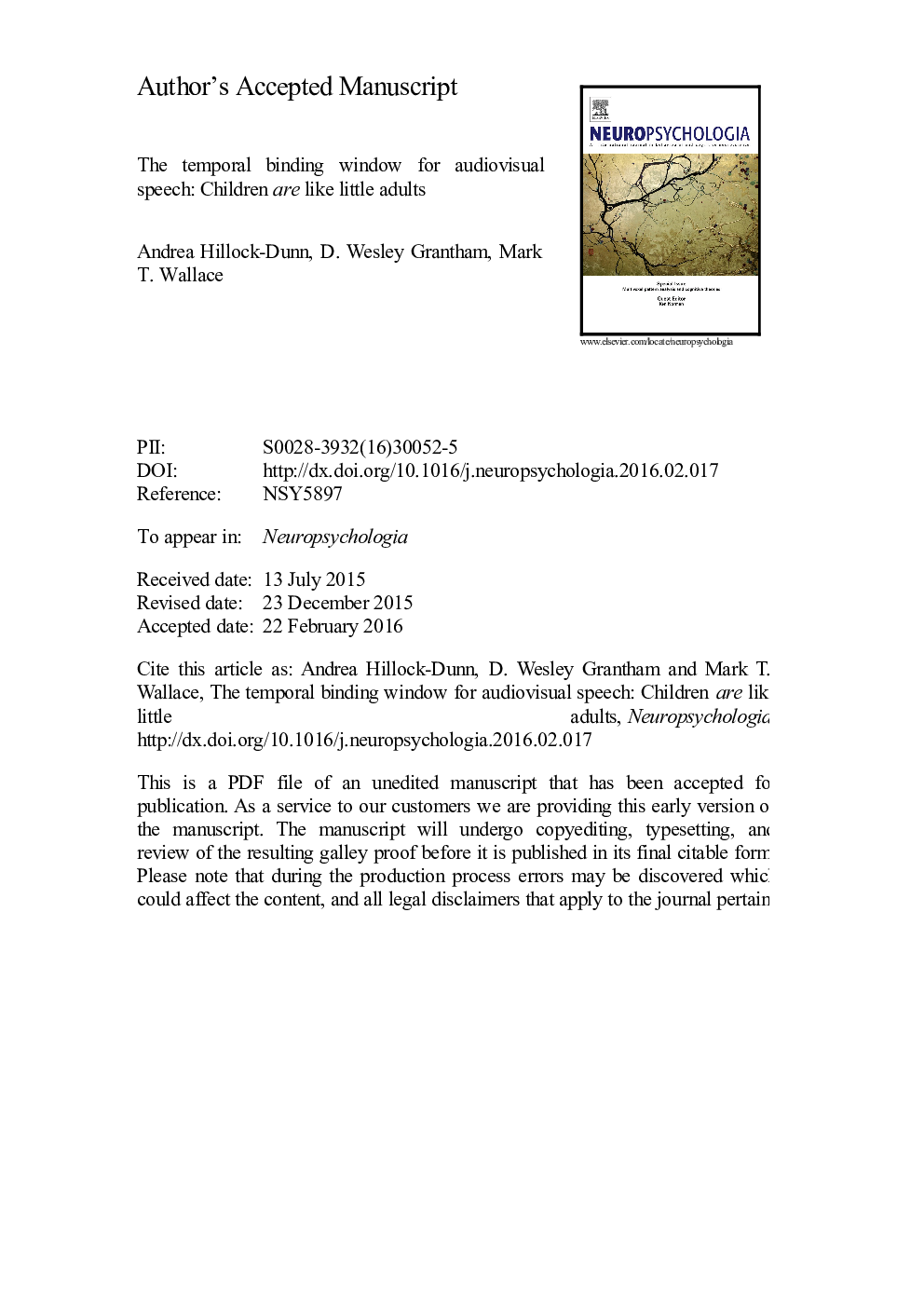| Article ID | Journal | Published Year | Pages | File Type |
|---|---|---|---|---|
| 7318830 | Neuropsychologia | 2016 | 43 Pages |
Abstract
During a typical communication exchange, both auditory and visual cues contribute to speech comprehension. The influence of vision on speech perception can be measured behaviorally using a task where incongruent auditory and visual speech stimuli are paired to induce perception of a novel token reflective of multisensory integration (i.e., the McGurk effect). This effect is temporally constrained in adults, with illusion perception decreasing as the temporal offset between the auditory and visual stimuli increases. Here, we used the McGurk effect to investigate the development of the temporal characteristics of audiovisual speech binding in 7-24 year-olds. Surprisingly, results indicated that although older participants perceived the McGurk illusion more frequently, no age-dependent change in the temporal boundaries of audiovisual speech binding was observed.
Related Topics
Life Sciences
Neuroscience
Behavioral Neuroscience
Authors
Andrea Hillock-Dunn, D. Wesley Grantham, Mark T. Wallace,
